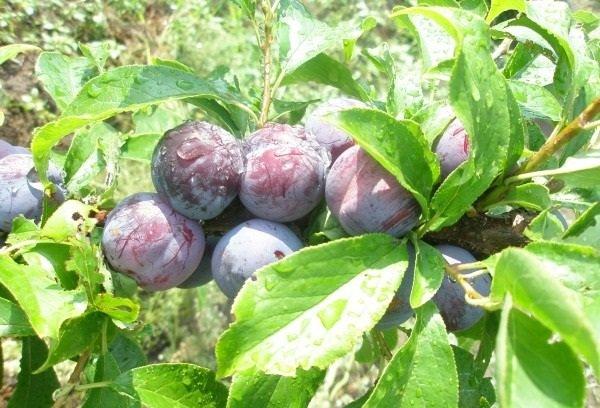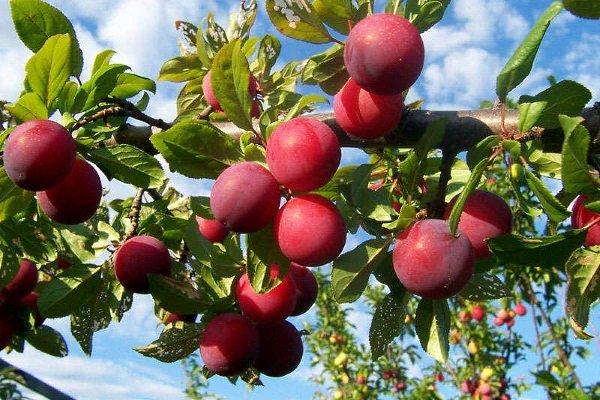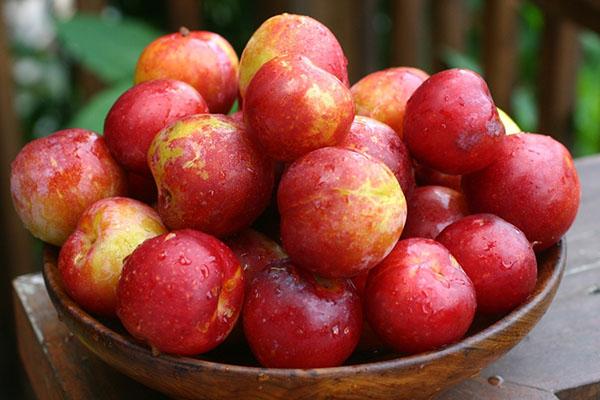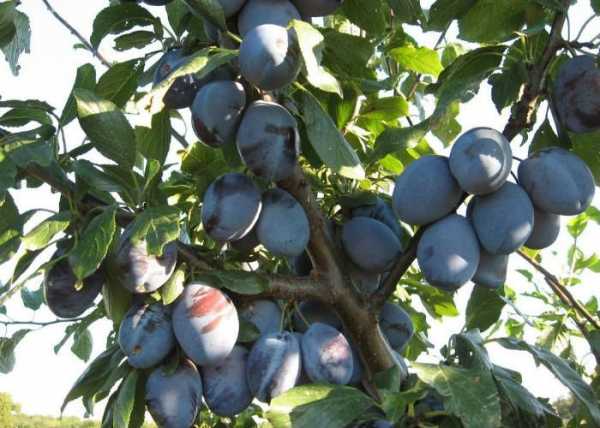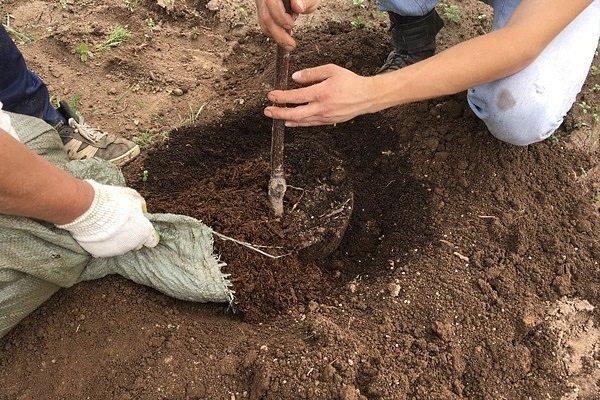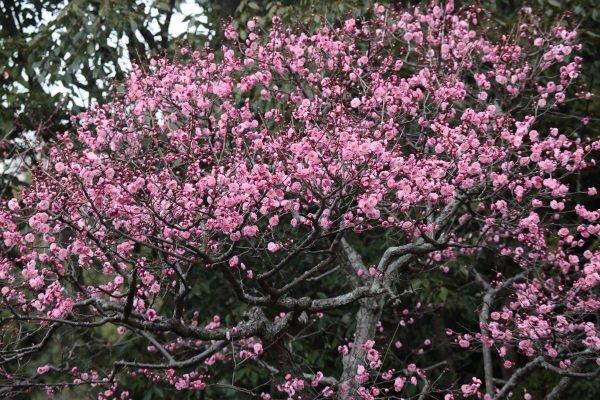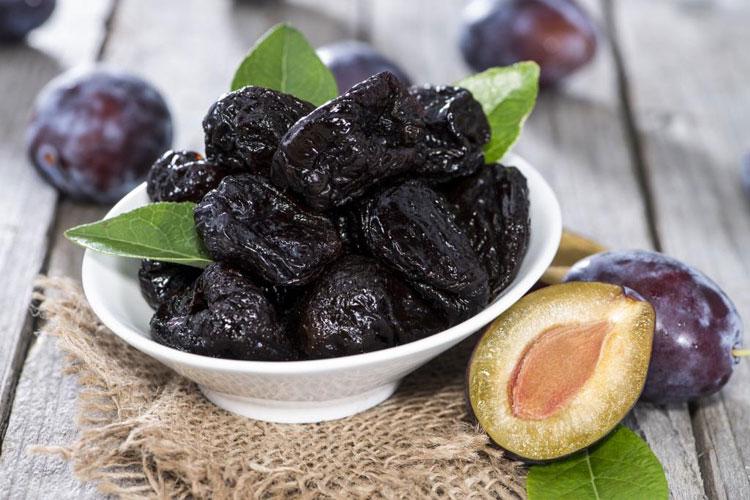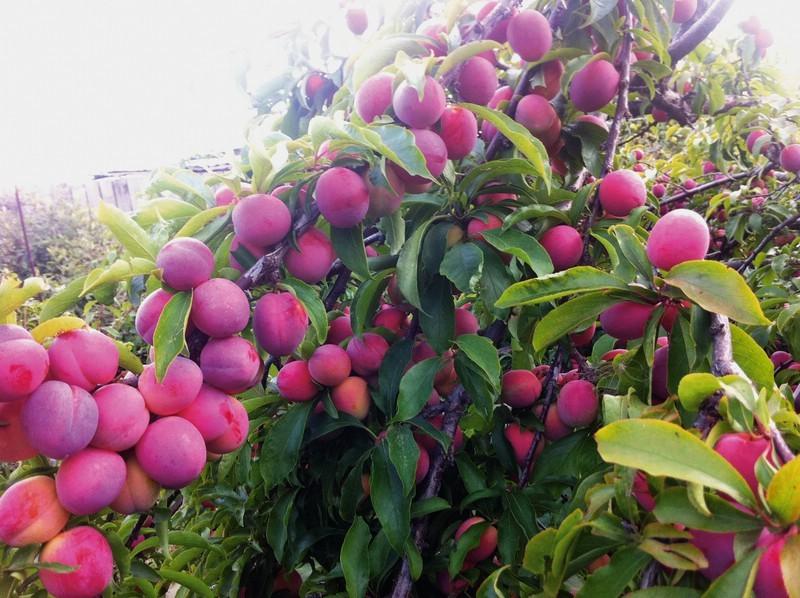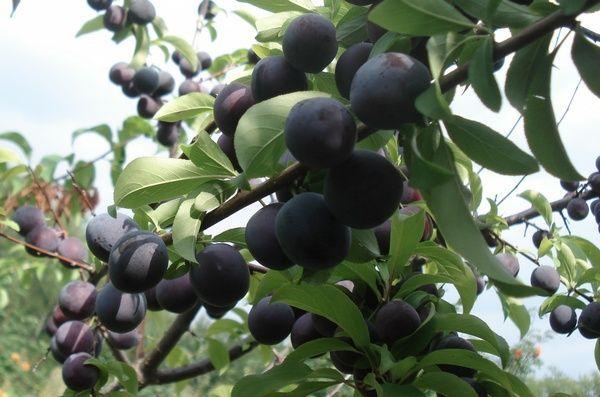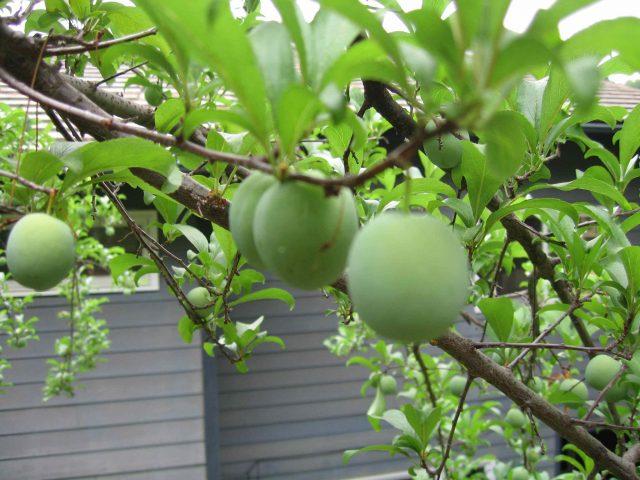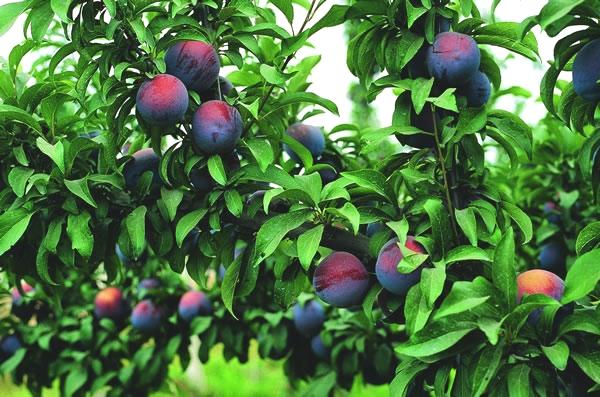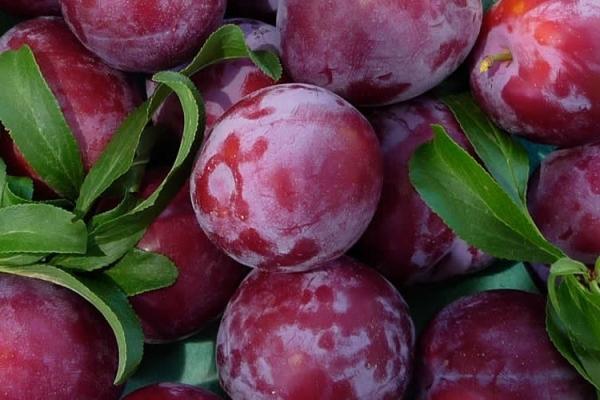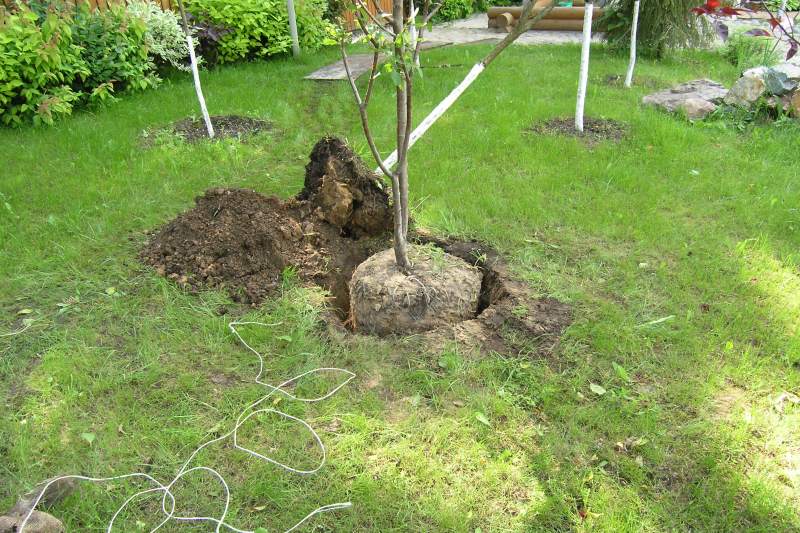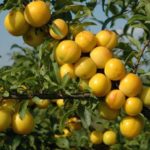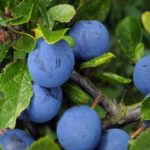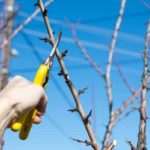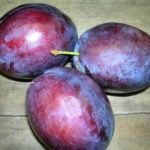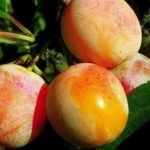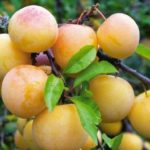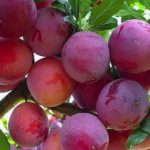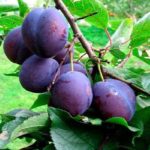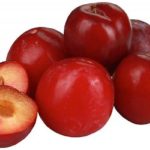If you choose a fruit crop for regions with harsh winters, then the Manchurian beauty plum will be one of the best options. This compact plant does not have any special requirements for growing conditions, is characterized by an increased degree of frost resistance and the ability to produce stable, albeit moderate, yields. To grow the Manchurian beauty plum, it is enough to adhere to the correct agricultural technology and choose only high-quality planting material.
- History of selection of the Manchurian beauty
- Distinctive features and description of the variety
- Characteristics
- Varietal resistance to sub-zero temperatures and drought
- Susceptibility to diseases and parasites
- Pollinator varieties
- Productivity and fruiting
- Where are the fruits of the tree used?
- The main pros and cons of culture
- Planting plums on the site
- The best time for planting
- Optimal landing place
- Favorable and Undesirable Neighbors
- Selection and preparation of seedlings
- Technological process of planting
- Proper plant care
- Irrigation and fertilizing
- Crown formation
- Preventative treatments
- Loosening and care of the tree trunk circle
- Preparing for winter
- Reviews from experienced gardeners about the variety
History of selection of the Manchurian beauty
The selection of Manchurian plum seedlings was carried out by M.F. Ivanov, who lived in Manchuria (XX century). Young plants arrived in the Far East in the late 20s; they were sent by A.A. Taratukhin. And breeder N.N. became the distributor of the promising Manchurian plum. Tikhonov. The variety was obtained by crossing three varieties of plums: Chinese, Ussuri and Simona.
Distinctive features and description of the variety
The Manchurian plum is a fast-growing tree, since its central conductor is weakly expressed, it is often considered a large shrub. The plant reaches only 1.6-1.8 meters in height. The dense rounded crown is formed by brown-gray branches and curved brown shoots. The bark has a flaky texture; due to the active awakening of the buds, increased branching is observed.
Small flowers are found on bouquet branches. One bud contains up to three white flowers, which open earlier than the leaves.
The leaf apparatus is distinguished by its dark green color and glossy surface. The leaf blades grow up to 10 centimeters in length and their width is 4 centimeters. The shape is elliptical, the upper part is pointed, and the plate itself is slightly concave.
The shape of the Manchurian beauty plum fruit is predominantly round, pressed at the base, there is a narrow deep funnel and a clearly visible ventral suture. The average weight is 15-20 grams, but there are large specimens - up to 30 grams. The peduncle is short and thick.
The skin is not sufficiently dense; it is thin and colored dark burgundy with a bluish tinge. The bone is oblong, small, and difficult to separate. The taste of Manchurian beauty plums is sweet and sour, the aroma is weak.
The sugar content of the Manchurian Beauty plum is 15%, dry matter 24%, titratable acids - 1.7%. There are almost 9 milligrams of ascorbic acid per 100 grams of product.
Characteristics
The Chuya beauty plum, as the variety is also called, has won recognition among gardening enthusiasts for its resistance to adverse environmental factors. To successfully grow it, it is necessary to consider all the strengths and weaknesses in more detail.
Varietal resistance to sub-zero temperatures and drought
The Manchurian beauty plum from Ussuriysk is a cold-resistant variety and has a high degree of frost resistance. The plant safely tolerates low temperatures down to -40 degrees. Drought resistance is good, but in hot weather it is recommended to water the plum abundantly, the frequency of irrigation is once every 10-12 days.
A lack of moisture, as well as an excess of it, is not reflected in the best way on the future harvest.
In addition, you should not allow moisture to stagnate in the soil, otherwise there is a high probability of putrefactive processes developing on the root system of the tree.
Susceptibility to diseases and parasites
In the Manchurian beauty plum, experienced gardeners note increased immunity to major ailments and harmful insects.So, when growing it in the Far East, there is no danger of infection with rubella. The plant has a sufficient level of resistance to kleasterosporiosis, as well as fungal infections that provoke the appearance of coccomycosis. Only against moniliosis does the Manchurian plum have no immunity.
In order to prevent the development of diseases and the invasion of harmful insects, it is necessary to carry out preventive measures in both autumn and spring.
Pollinator varieties
Since the Manchurian beauty plum is not a self-fertile plant, it needs additional pollinating varieties for effective fruiting. It is best to use Ural golden, Ussuri, Ural red or Manchurian prunes for these purposes. The productivity indicators of the Manchurian plum increase significantly if 2-3 varieties with the same flowering periods as it are planted on a nearby plot.
Productivity and fruiting
The Manchurian beauty plum is a fast-bearing plant. The first harvest can already be obtained in the third year after planting in a permanent place. Fruiting is stable. A young plant produces 8-10 kilograms of delicious plums, and an adult plant produces up to 24 kilograms.
To prevent crop shedding, harvesting must be done 3-4 days before consumer maturity.
Where are the fruits of the tree used?
Manchurian Beauty plums are distinguished by a whole range of useful components, dessert taste and slight sourness. They can be used to prepare homemade preparations, compotes and jams, and they are also very tasty when eaten fresh.
The main pros and cons of culture
The Manchurian beauty plum has a whole list of positive characteristics, including:
- precociousness;
- universal purpose of fruits;
- high consumer and product qualities;
- ease of care;
- frost resistance;
- drought resistance;
- increased immunity to diseases and parasitic individuals;
- stable yield.
Among the disadvantages of the Manchurian plum are:
- the need for regular crown molding due to the intensive growth rate of the tree;
- dependence of the variety’s productivity on other pollinators.
Planting plums on the site
To achieve good results, it is recommended to adhere to the timing and technology of planting the Manchurian plum.
The best time for planting
When grown in the northern regions, it is necessary to determine the Manchurian beauty plum for a permanent place in the garden in the spring. If work is carried out in the fall, then there is a high probability of frost damage to the seedling.
Optimal landing place
The crop is most productive in areas that are well lit and protected from draft winds. The depth of groundwater at the planting site should not be less than 1.5 meters. It is worth preparing the hole on a hill; planting in a lowland is fraught with the harmful effects of stagnant cold air on the young plant.
Favorable and Undesirable Neighbors
It is recommended to place the Manchurian plum from the apple tree and garden shrubs at a distance of 3-4 meters. The proximity to a tall pear does not have the best effect on the Chuya beauty; the plant does not receive enough sunlight. Considering the short stature of the fruit crop, it is not worth identifying it close to decorative deciduous and coniferous plantings.
Selection and preparation of seedlings
It is more advisable to purchase annual or biennial seedlings with a well-developed root system.Their branches should be elastic, without signs of disease, signs of rot and various types of damage. The roots should not be dry. Before planting, they are kept in a clay mash for several hours.
Technological process of planting
To avoid moisture stagnation in the future, a layer of drainage 10 centimeters thick should be laid in the hole. For Manchurian plum, loamy, soddy-podzolic soil with moderate acidity is preferable. To fertilize the soil, compost (30 kilograms), azofoska (800 grams), urea (200 grams) and potassium chloride (200 grams) are added per square meter. The nutritional composition is added during digging.
Step-by-step disembarkation process:
- A soil mixture in the form of a mound is poured into a prepared hole with a depth and diameter of 60 centimeters.
- Place the seedling in the center and straighten its roots. There is no need to deepen the root collar; it should be 3-4 centimeters higher from ground level.
- The roots are sprinkled and the soil is carefully compacted to eliminate voids.
- A groove is formed around the seedling and 1-1.5 buckets of water are added.
- The soil is mulched with peat or humus.
Proper plant care
The Manchurian beauty plum does not require a special approach in terms of care. It is enough to moisten the soil in a timely manner, remove weeds, apply fertilizing and perform standard pruning.
Irrigation and fertilizing
Irrigation activities are carried out once a month. The soil should be moistened to 40 centimeters. Fertilizer is applied after 2-3 years, using a composition of mullein (2 kilograms), urea (25 grams) and ammonium nitrate (25 grams). In the summer, ash is used at the rate of 200 grams per 1 square meter.
Crown formation
Pruning should be done either in the spring or fall before the onset of cold weather. Plum molding is carried out from the second year and continues up to 4 years. Subsequently, incompetent branches and damaged shoots are removed. The wound surface is treated with garden varnish.
Preventative treatments
To prevent the development of diseases, it is necessary to periodically thin out the plum crown. It is worth removing fallen leaves and fruits from the tree trunk circle. It is effective to treat plants with Bordeaux mixture (3 times per season) against pathogenic microorganisms.
Loosening and care of the tree trunk circle
After each irrigation, you need to loosen the soil to avoid oxygen starvation of the roots. It is recommended to mulch the soil with humus, peat, and freshly cut grass.
Preparing for winter
Young plantings are protected with non-woven material or burlap. In mature trees, the trunk is whitened, and the trunk circle is mulched with sawdust, pine needles, and straw.
Reviews from experienced gardeners about the variety
Plum Manchurian beauty has mostly positive reviews. It is valued for its endurance, frost resistance, and high immunity. Even novice gardeners can grow the crop.

